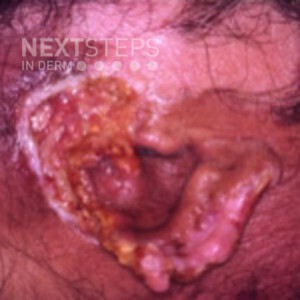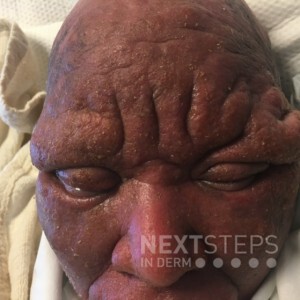Tumor Mutations – Friday Pop Quiz 5/14
130621306213062 This tumor commonly results from mutations in p53. Which of the following is correct?
A. It is the most common type of skin cancer in Caucasians
B. Oral variants most commonly present on the dorsal tongue
C. It is typically less aggressive in patients with CLL
D. plant patients have a 10-fold increased risk of developing this tumor
E. Tumors arising within scars/chronic ulcers h …
This tumor commonly results from mutations in p53. Which of the following is correct?
A. It is the most common type of skin cancer in Caucasians
B. Oral variants most commonly present on the dorsal tongue
C. It is typically less aggressive in patients with CLL
D. plant patients have a 10-fold increased risk of developing this tumor
E. Tumors arising within scars/chronic ulcers h …
 This tumor commonly results from mutations in p53. Which of the following is correct?
A. It is the most common type of skin cancer in Caucasians
B. Oral variants most commonly present on the dorsal tongue
C. It is typically less aggressive in patients with CLL
D. plant patients have a 10-fold increased risk of developing this tumor
E. Tumors arising within scars/chronic ulcers h …
This tumor commonly results from mutations in p53. Which of the following is correct?
A. It is the most common type of skin cancer in Caucasians
B. Oral variants most commonly present on the dorsal tongue
C. It is typically less aggressive in patients with CLL
D. plant patients have a 10-fold increased risk of developing this tumor
E. Tumors arising within scars/chronic ulcers h … 

 A biopsy for DIF is negative. IIF is positive for IgG antibodies directed against monkey esophagus. Which of the following is true regarding the diagnosis?
A. The primary target antigen is desmoglein 1
B. A positive DIF would show intercellular and linear IgG & C3 along the BMZ
C. It is associated with bronchiolitis obliterans
D. Autoantibody titers correlate with disease activ …
A biopsy for DIF is negative. IIF is positive for IgG antibodies directed against monkey esophagus. Which of the following is true regarding the diagnosis?
A. The primary target antigen is desmoglein 1
B. A positive DIF would show intercellular and linear IgG & C3 along the BMZ
C. It is associated with bronchiolitis obliterans
D. Autoantibody titers correlate with disease activ …  Which subtype of this disease is most common in the United States?
A. C
B. A
C. B
D. D
E. E
To find out the correct answer and read the explanation, click here.
Brought to you by our brand partner Derm In-Review. A product of SanovaWorks.
…
Which subtype of this disease is most common in the United States?
A. C
B. A
C. B
D. D
E. E
To find out the correct answer and read the explanation, click here.
Brought to you by our brand partner Derm In-Review. A product of SanovaWorks.
…  A 38-year-old African American female presents with grouped follicular papules, acneiform lesions, indurated plaques and tumors which are most pronounced in the head and neck area (see image). The skin lesions are associated with alopecia and mucinorrhea. She has infiltrated plaques in both eyebrows and complains of severe pruritus. She has experienced frequent secondary bacterial infections w …
A 38-year-old African American female presents with grouped follicular papules, acneiform lesions, indurated plaques and tumors which are most pronounced in the head and neck area (see image). The skin lesions are associated with alopecia and mucinorrhea. She has infiltrated plaques in both eyebrows and complains of severe pruritus. She has experienced frequent secondary bacterial infections w …  The following patient recently underwent submental injections of deoxycholic acid (Kybella). One day later, she noticed an inability of her right lip depressors to pull her lip downward and laterally, particularly when smiling. What is the next best step?
A. Watchful waiting
B. Inject the opposite side to achieve symmetry
C. Obtain an MRI
D. Inject intralesional corticosteroids
…
The following patient recently underwent submental injections of deoxycholic acid (Kybella). One day later, she noticed an inability of her right lip depressors to pull her lip downward and laterally, particularly when smiling. What is the next best step?
A. Watchful waiting
B. Inject the opposite side to achieve symmetry
C. Obtain an MRI
D. Inject intralesional corticosteroids
…